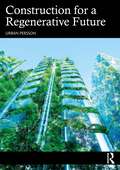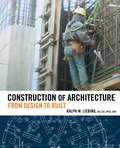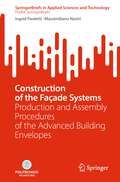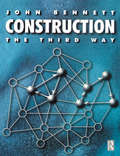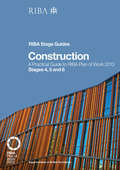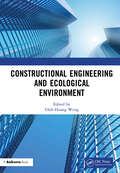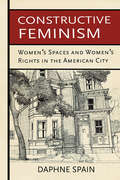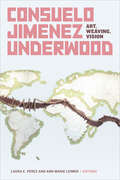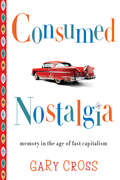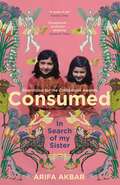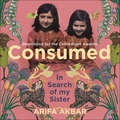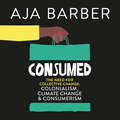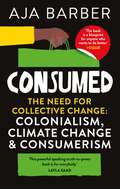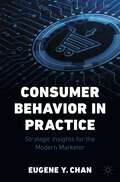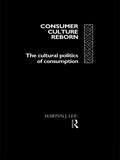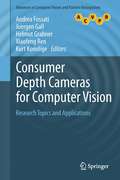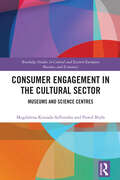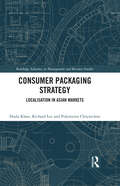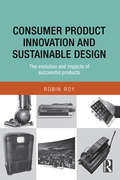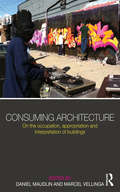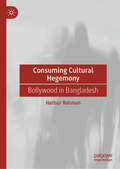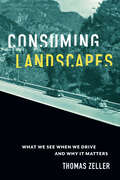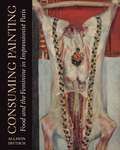- Table View
- List View
Construction for a Regenerative Future
by Urban PerssonThis is a book about how to manage the processes involved in a construction project towards a sustainable and regenerative endproduct. It covers key project management concepts and links the construction process to the objectives of UN SDGs and beyond zero carbon emissions throughout the whole project life cycle. This introductory textbook is written from a project manager's perspective including considerations of circular economy throughout the construction process focusing on a regenerative or restorative outcome. The book examines the importance of the type and purpose of a building, circularity and de-construction, the site, the client and its organisation, stakeholder considerations, the project organisation, the procurement of consultants and contractors, project performance during design and construction, project hand-over to the client, and the building's operation and maintenance. It also illustrates how to verify the building using existing environmental certifications, how to calculate carbon emissions, and how to deal with used construction materials from a circular economy perspective. International examples of best practice are included throughout, and the book is structured in a way which students will find engaging and easy to follow. This is an ideal textbook for use on construction, architecture, and engineering programmes where the emphasis must urgently be placed on students fostering regenerative construction solutions in their coming professional life.
Construction of Architecture
by Ralph W. LiebingBuildings don't just appear. While the aesthetics and theory of architecture have their glamour, architecture would not exist without the hands-on, nuts-and-bolts process of construction. Construction of Architecture gives architects, contractors, managers, trade workers, and anyone else involved in a building project a thorough overview of the process of taking or converting a fine design concept from a paper exercise to a finished, full-sized, occupiable and usable building.In an easy-to-read, conversational style, Ralph Liebing distills the often-complex procedures in the construction of architecture into clear, understandable phases. Connecting each phase to the next, he takes you step-by-step from project inception and documentation to code compliance to bidding and the contract through finalization of the project and occupancy of the completed building.This book is enhanced with features such as:Drawings and photographs of the building process.Samples of documents used in construction.A concise narrative of the construction of a typical commercial building, from start to finish.An Instructor Companion Site with an expanded glossary and additional resources.With this primer in hand, every aspiring building professional will have the solid foundation in the concepts and skills needed to bring any building project to fruition, from inception to occupancy.
Construction of the Façade Systems: Production and Assembly Procedures of the Advanced Building Envelopes (SpringerBriefs in Applied Sciences and Technology)
by Ingrid Paoletti Massimiliano NastriThe book explores the advanced façade systems according to the productive and constructive contents, in a cognitive and operative form, as a manual text to provide guidelines for researchers, technicians and professionals. It provides operational guidance for the technological design, production planning and site executive coordination for the realization of façade systems. The analysis deals with the main building elements and technical interfaces. The study of the façade systems, after explaining the anchoring structures and their connections to the load-bearing elements, investigates the criteria for the assembly between the framings. In particular, the book examines the technical interfaces of the main advanced envelope systems with respect to the functional, constructive and applicative coordination procedures of the mullions and transoms framing, of the structural sealant glazing façade system, of the unit façade system, of the suspended façade system and of the double skin façade system. The technical and manual character of the book is also expressed through the analysis of the functional and application procedures of the gaskets with respect to the façade systems in order to prevent the transmission of air and water loads: the analysis focuses on the connections between the framing and the enclosure elements of the envelope, in accordance with the compensation of height differences in order to guarantee impermeability, airtightness and insulation. Then, the book describes the assembly and interface conditions between elements of different composition and production within the façade systems: the examination of the technical interfaces involves the development and application of sealants, based on the loads exerted on the jointing devices, in order to fulfill the requirements of sealing and tightness with respect to mechanical, thermal and hygrometric, water, air and wind stresses. Moreover, the study of the envelope systems examines the methodologies directed toward fulfilling the requirements with respect to the actions caused by fire loads, considering the contents related to both components and connections and fixing surfaces.
Construction the Third Way
by John BennettThis book describes current best practice in managing construction. It is based on case studies of leading practice responding to demands from customers that construction match the value and quality that international competition is forcing on their own businesses. The case studies show that major customers now partner with construction firms to find more efficient ways of working. The resulting best practice adds to these cooperative approaches a drive for efficiency and innovation based on benchmarks of world class performance that empower teams to set themselves competitive targets. So the new approach balances cooperation and competition.This is why Professor John Bennett's book is called ''Construction: The Third Way.'' The third way in modern politics balances the extremes of cooperation and competition in the interests of the whole community. At its best it encourages sustainable economic growth within a fair society. These aims are echoed in leading practice where teams able to balance cooperation and competition deliver better value for their customers and yet earn sustainably higher profits for construction.The new approach requires managers to rethink construction using ideas from fundamental science that see human organizations as self-organizing networks of relationships. This throws new light on the strengths and weaknesses of both competition and cooperation, and provides the basis for a new paradigm to guide key construction decisions. The book describes this background and provides advice about organization structures that are responsive to changing markets and technologies, and construction processes that enable the industry to earch fair profits by providing customers with the levels of value and quality they now demand.
Construction: A Practical Guide to RIBA Plan of Work 2013 Stages 4, 5 and 6 (RIBA Stage Guide)
by Phil HoldenThis is the third in a must-have series of step-by-step guides to using the new RIBA Plan of Work 2013 on your project. Drawing together stages 4, 5 and 6 this book explains what needs to have been achieved for Technical Design to begin, how to achieve success in the construction phase as well as the importance of a comprehensive Handover Strategy.Providing a practical tool to running an efficient project each guide follows the same format leading you through the core tasks at each stage supported by tips, definitions, templates and useful techniques. Five theoretical scenarios are used throughout the guides to illustrate how the Plan of Work can be applied on various project types and sizes including an extension to a house, a new library and a large office building.These guides will provide unrivalled support for practices on all projects – large and small – and across all types of procurement.
Constructional Engineering and Ecological Environment: Proceedings of the 4th International Symposium on Architecture Research Frontiers and Ecological Environment (ARFEE 2022), Guilin, China, 23-25 December 2022
by Chih-Huang WengConstructional Engineering and Ecological Environment contains papers presented at the 4th International Symposium on Architecture Research Frontiers and Ecological Environment (ARFEE 2022, Guilin, China, 23–25 December, 2022). With a focus on hot research topics and difficulties in construction technology and ecological environment, this book provides the latest research results on a variety of topics: building structure civil engineering seismic technology ecological environment repair The book is aimed at engineers, scholars and researchers in construction, structural engineering and environmental sciences.
Constructional Steel Design: World developments
by R. Bjorhovde P. J. Dowling J. E. Harding E. Martinez-RomeroThis book consists of the papers presented at the First World Conference on Constructional Steel Design held in Acapulco, Mexico, December 1992. The Conference provided a forum for presentation and discussion by designers and research workers involved with steel construction.
Constructive Feminism: Women's Spaces and Women's Rights in the American City
by Daphne SpainIn Constructive Feminism, Daphne Spain examines the deliberate and unintended spatial consequences of feminism's second wave, a social movement dedicated to reconfiguring power relations between women and men. Placing the women's movement of the 1970s in the context of other social movements that have changed the use of urban space, Spain argues that reform feminists used the legal system to end the mandatory segregation of women and men in public institutions, while radical activists created small-scale places that gave women the confidence to claim their rights to the public sphere. Women's centers, bookstores, health clinics, and domestic violence shelters established feminist places for women's liberation in Boston, Los Angeles, and many other cities. Unable to afford their own buildings, radicals adapted existing structures to serve as women's centers that fostered autonomy, health clinics that promoted reproductive rights, bookstores that connected women to feminist thought, and domestic violence shelters that protected their bodily integrity. Legal equal opportunity reforms and daily practices of liberation enhanced women's choices in education and occupations. Once the majority of wives and mothers had joined the labor force, by the mid-1980s, new buildings began to emerge that substituted for the unpaid domestic tasks once performed in the home. Fast food franchises, childcare facilities, adult day centers, and hospices were among the inadvertent spatial consequences of the second wave.
Consuelo Jimenez Underwood: Art, Weaving, Vision
by Laura E. Pérez and Ann Marie LeimerConsuelo Jimenez Underwood’s artwork is marked by her compassionate and urgent engagement with a range of pressing contemporary issues, from immigration and environmental precarity to the resilience of Indigenous ancestral values and the necessity of decolonial aesthetics in art making. Drawing on the fiber arts movement of the 1960s and 1970s, Chicana feminist art, and Indigenous fiber- and loom-based traditions, Jimenez Underwood’s art encompasses needlework, weaving, painted and silkscreened pieces, installations, sculptures, and performance. This volume’s contributors write about her place in feminist textile art history, situate her work among that of other Indigenous-identified feminist artists, and explore her signature works, series, techniques, images, and materials. Redefining the practice of weaving, Jimenez Underwood works with repurposed barbed wire, yellow caution tape, safety pins, and plastic bags and crosses Indigenous, Chicana, European, and Euro-American art practices, pushing the arts of the Americas beyond Eurocentric aesthetics toward culturally hybrid and Indigenous understandings of art making. Jimenez Underwood’s redefinition of weaving and painting alongside the socially and environmentally engaged dimensions of her work position her as one of the most vital artists of our time.Contributors. Constance Cortez, Karen Mary Davalos, Carmen Febles, María Esther Fernández, Christine Laffer, Ann Marie Leimer, Amalia Mesa-Bains, Robert Milnes, Jenell Navarro, Laura E. Pérez, Marcos Pizarro, Verónica Reyes, Clara Román-Odio, Carol Sauvion, Cristina Serna, Emily Zaiden
Consumed Nostalgia: Memory in the Age of Fast Capitalism
by Gary CrossNostalgia isn't what it used to be. For many of us, modern memory is shaped less by a longing for the social customs and practices of the past or for family heirlooms handed down over generations and more by childhood encounters with ephemeral commercial goods and fleeting media moments in our age of fast capitalism. This phenomenon has given rise to communities of nostalgia whose members remain loyal to the toys, television, and music of their youth. They return to the theme parks and pastimes of their upbringing, hoping to reclaim that feeling of childhood wonder or teenage freedom. Consumed nostalgia took definite shape in the 1970s, spurred by an increase in the turnover of consumer goods, the commercialization of childhood, and the skillful marketing of nostalgia. Gary Cross immerses readers in this fascinating and often delightful history, unpacking the cultural dynamics that turn pop tunes into oldies and childhood toys into valuable commodities. He compares the limited appeal of heritage sites such as Colonial Williamsburg to the perpetually attractive power of a Disney theme park and reveals how consumed nostalgia shapes how we cope with accelerating change. Today nostalgia can be owned, collected, and easily accessed, making it less elusive and often more fun than in the past, but its commercialization has sometimes limited memory and complicated the positive goals of recollection. By unmasking the fascinating, idiosyncratic character of modern nostalgia, Cross helps us better understand the rituals of recall in an age of fast capitalism.
Consumed: A Sister's Story
by Arifa Akbar'If her moving, engrossing, elegantly written memoir does not win prizes, there really is no justice in the literary world.' Lucy Atkins, Sunday TimesAll happy families are alike; each unhappy family is unhappy in its own way.When Arifa Akbar discovered that her sister had fallen seriously ill, she assumed there would be a brief spell in hospital and then she'd be home. This was not to be. It was not until the day before she died that the family discovered she was suffering from tuberculosis. Consumed is a story of sisterhood, grief, the redemptive power of art and the strange mythologies that surround tuberculosis. It takes us from Keats's deathbed and the tubercular women of opera to the resurgence of TB in modern Britain today. Arifa travels to Rome to haunt the places Keats and her sister had explored, to her grandparent's house in Pakistan, to her sister's bedside at the Royal Free Hospital in Hampstead and back to a London of the seventies when her family first arrived, poor, homeless and hungry. Consumed is an eloquent and moving excavation of a family's secrets and a sister's detective story to understand her sibling.
Consumed: A Sister's Story
by Arifa Akbar'If her moving, engrossing, elegantly written memoir does not win prizes, there really is no justice in the literary world.' Lucy Atkins, Sunday TimesAll happy families are alike; each unhappy family is unhappy in its own way.When Arifa Akbar discovered that her sister had fallen seriously ill, she assumed there would be a brief spell in hospital and then she'd be home. This was not to be. It was not until the day before she died that the family discovered she was suffering from tuberculosis. Consumed is a story of sisterhood, grief, the redemptive power of art and the strange mythologies that surround tuberculosis. It takes us from Keats's deathbed and the tubercular women of opera to the resurgence of TB in modern Britain today. Arifa travels to Rome to haunt the places Keats and her sister had explored, to her grandparent's house in Pakistan, to her sister's bedside at the Royal Free Hospital in Hampstead and back to a London of the seventies when her family first arrived, poor, homeless and hungry. Consumed is an eloquent and moving excavation of a family's secrets and a sister's detective story to understand her sibling.
Consumed: A Sister’s Story - SHORTLISTED FOR THE COSTA BIOGRAPHY AWARD 2021
by Arifa AkbarA moving memoir about TB, grief, sisterhood, poverty and the reservoir of blame, guilt and unreliable memories from a troubled childhood in Lahore and London.All happy families are alike; each unhappy family is unhappy in its own way.When Arifa Akbar discovered that her sister had fallen seriously ill, she assumed there would be a brief spell in hospital and then she'd be home. This was not to be. It was not until the day before she died that the family discovered she was suffering from tuberculosis. Consumed is a story of sisterhood, grief, the redemptive power of art and the strange mythologies that surround tuberculosis. It takes us from Keats's deathbed and the tubercular women of opera to the resurgence of TB in modern Britain today. Arifa travels to Rome to haunt the places Keats and her sister had explored, to her grandparent's house in Pakistan, to her sister's bedside at the Royal Free Hospital in Hampstead and back to a London of the seventies when her family first arrived, poor, homeless and hungry. Consumed is an eloquent and moving excavation of a family's secrets and a sister's detective story to understand her sibling.(P) 2021 Hodder & Stoughton Ltd
Consumed: The need for collective change; colonialism, climate change & consumerism
by Aja BarberAja Barber wants change. In the 'learning' first half of the book, she will expose you to the endemic injustices in our consumer industries and the uncomfortable history of the textile industry; one which brokered slavery, racism and today's wealth inequality. And how these oppressive systems have bled into the fashion industry and its lack of diversity and equality. She will also reveal how we spend our money and whose pockets it goes into and whose it doesn't (clue: the people who do the actual work) and will tell her story of how she came to learn the truth.In the second 'unlearning' half of the book, she will help you to understand the uncomfortable truth behind why you consume the way you do. She asks you to confront the sense of lack you have, the feeling that you are never quite enough and the reasons why you fill the aching void with consumption rather than compassion. And she makes you challenge this power disparity, and take back ownership of it. The less you buy into the consumer culture the more power you have.CONSUMED will teach you how to be a citizen not a consumer.(p) 2021 Octopus Publishing Group
Consumed: The need for collective change; colonialism, climate change & consumerism
by Aja Barber'Consumed takes us through the hideously complex topic of fashion and sustainability, from its knotty colonial roots to what everyday people can do to uproot those systems, today.' - Yassmin Abdel-Magied 'SUCH integrity. Aja is no bullsh*t.' - Florence Given Aja Barber wants change. In the 'learning' first half of the book, she will expose you to the endemic injustices in our consumer industries and the uncomfortable history of the textile industry; one which brokered slavery, racism and today's wealth inequality. And how these oppressive systems have bled into the fashion industry and its lack of diversity and equality. She will also reveal how we spend our money and whose pockets it goes into and whose it doesn't (clue: the people who do the actual work) and will tell her story of how she came to learn the truth.In the second 'unlearning' half of the book, she will help you to understand the uncomfortable truth behind why you consume the way you do. She asks you to confront the sense of lack you have, the feeling that you are never quite enough and the reasons why you fill the aching void with consumption rather than compassion. And she makes you challenge this power disparity, and take back ownership of it. The less you buy into the consumer culture the more power you have.CONSUMED will teach you how to be a citizen not a consumer. 'An absolute must-read for any person who wears clothes.' - Orsola de Castro 'A hugely compelling exploration of a culture of exploitation and how, together, we can end it.' - Gina Martin 'Barber's isn't just a voice we should listen to - it is a voice we MUST listen to.' - Clementine Ford 'If you buy one book about sustainable fashion, make it this one. Consumed is an urgent call to action to demand a fashion system that is actually fair for both people and planet, not just Big Fashion billionaires. I adore Aja and I love this brilliant book.' - Venetia La Manna
Consumer Behavior in Practice: Strategic Insights for the Modern Marketer
by Eugene Y. ChanAimed at marketing students and practitioners, this book places less emphasis on theory but, instead, helps readers to understand why their customers are acting in a certain way or why their marketing activities or initiatives are not (or are) working out.The text examines the relevance of consumer behavior in such marketing topics as advertising and pricing, with topical chapters such as the sharing economy, luxury consumer behavior, and the ideological consumer. Each chapter includes boxes that highlight theory in greater depth; show how the concepts discuss “work” in actual practice; and the relevance of digital and social media marketing.This book will prove useful to those looking for a greater understanding of how consumer behavior provides greater insight about marketing activities.
Consumer Culture Reborn: The Cultural Politics of Consumption
by Martyn J. LeeFirst published in 1993. Routledge is an imprint of Taylor & Francis, an informa company.
Consumer Depth Cameras for Computer Vision: Research Topics and Applications (Advances in Computer Vision and Pattern Recognition)
by Andrea Fossati Helmut Grabner Kurt Konolige Juergen Gall Xiaofeng RenThe potential of consumer depth cameras extends well beyond entertainment and gaming, to real-world commercial applications. This authoritative text reviews the scope and impact of this rapidly growing field, describing the most promising Kinect-based research activities, discussing significant current challenges, and showcasing exciting applications. Features: presents contributions from an international selection of preeminent authorities in their fields, from both academic and corporate research; addresses the classic problem of multi-view geometry of how to correlate images from different viewpoints to simultaneously estimate camera poses and world points; examines human pose estimation using video-rate depth images for gaming, motion capture, 3D human body scans, and hand pose recognition for sign language parsing; provides a review of approaches to various recognition problems, including category and instance learning of objects, and human activity recognition; with a Foreword by Dr. Jamie Shotton.
Consumer Engagement in the Cultural Sector: Museums and Science Centres (Routledge Studies in Central and Eastern European Business and Economics)
by Magdalena Kosiada-Sylburska Paweł BryłaThe essence of the book is to investigate the forms, benefits and limitations of engaging consumers in the development of cultural institution offerings. It aims to identify methods for culture product development with consumer engagement, in particular concerning exhibition and educational activities of cultural institutions. The volume provides an extensive literature review of issues related to market orientation, customer centricity, consumer engagement and co-creation of products and services, with an emphasis on the specificity of the cultural sector.The authors conduct research to capture different perspectives on consumer engagement, including those of consumers themselves, managers responsible for designing the offer and cultural institution employees. They identify forms, success factors of and barriers to involving consumers (visitors) in the development of museum offerings. The combination of quantitative and qualitative research methods provides novel and valuable insights into the phenomenon under study. This book will be of interest to scholars interested in culture marketing and consumer behaviour, as well as managers of museums, science centres and other cultural institutions.
Consumer Packaging Strategy: Localisation in Asian Markets (Routledge Advances in Management and Business Studies)
by Richard Lee Huda Khan Polymeros ChrysochouThe consumer packaged goods (CPG) industry is dominated by major Western brands. The dominance of such major brands extends to Asian burgeoning markets. These conglomerates often rely on packaging as a strategic tool to entice Asian consumers. This book illustrates how packaging as a marketing tool is more than simply changing the label or translating the brand into vernacular language. It examines how different packaging elements (e.g. information, imagery, packaging type) can help to communicate product values to Asian consumers. Drawing upon rich knowledge of the Asian CPG markets with extensive findings from fieldworks in the key Asian markets, this book explains how Western brands are localising their packaging design in Asian markets. It provides invaluable insight into how major Western CPG brands have relied heavily on their packaging strategies to compete not only against domestic brands but also against other foreign brands. The book includes in-depth interviews with brand managers of several major Western CPG brands and retailers, and sheds light on emerging trends of CPG packaging in Asia.
Consumer Product Innovation and Sustainable Design: The Evolution and Impacts of Successful Products
by Robin RoyConsumer Product Innovation and Sustainable Design follows the innovation and evolution of consumer products from vacuum cleaners to mobile phones from their original inventions to the present day. It discusses how environmental concerns and legislation have influenced their design and the profound effects these products have had on society and culture. This book also uses the lessons from the successes and failures of examples of these consumer products to draw out practical guidelines for designers, engineers, marketers and managers on how to become more effective at product development, innovation and designing for environmental sustainability.
Consuming Architecture: On the occupation, appropriation and interpretation of buildings
by Daniel Maudlin Marcel VellingaProjecting forward in time from the processes of design and construction that are so often the focus of architectural discourse, Consuming Architecture examines the variety of ways in which buildings are consumed after they have been produced, focusing in particular on processes of occupation, appropriation and interpretation. Drawing on contributions by architects, historians, anthropologists, literary critics, artists, film-makers, photographers and journalists, it shows how the consumption of architecture is a dynamic and creative act that involves the creation and negotiation of meanings and values by different stakeholders and that can be expressed in different voices. In so doing, it challenges ideas of what constitutes architecture, architectural discourse and architectural education, how we understand and think about it, and who can claim ownership of it. Consuming Architecture is aimed at students in architectural education and will also be of interest to students and researchers from disciplines that deal with architecture in terms of consumption and material culture.
Consuming Cultural Hegemony: Bollywood in Bangladesh
by Harisur RahmanThis book examines the circulation and viewership of Bollywood films and filmi modernity in Bangladesh. The writer poses a number of fundamental questions: what it means to be a Bangladeshi in South Asia, what it means to be a Bangladeshi fan of Hindi film, and how popular film reflects power relations in South Asia. The writer argues that partition has resulted in India holding hegemonic power over all of South Asia’s nation-states at the political, economic, and military levels–a situation that has made possible its cultural hegemony. The book draws on relevant literature from anthropology, sociology, film, media, communication, and cultural studies to explore the concepts of hegemony, circulation, viewership, cultural taste, and South Asian cultural history and politics.
Consuming Landscapes: What We See When We Drive and Why It Matters
by Thomas ZellerWhat we see through our windshields reflects ideas about our national identity, consumerism, and infrastructure.For better or worse, windshields have become a major frame for viewing the nonhuman world. The view from the road is one of the main ways in which we experience our environments. These vistas are the result of deliberate historical forces, and humans have shaped them as they simultaneously sought to be transformed by them. In Consuming Landscapes, Thomas Zeller explores how what we see while driving reflects how we view our societies and ourselves, the role that consumerism plays in our infrastructure, and ideas about reshaping the environment in the twentieth century.Zeller breaks new ground by comparing the driving experience and the history of landscaped roads in the United States and Germany, two major automotive countries. He focuses specifically on the Blue Ridge Parkway in the United States and the German Alpine Road as case studies. When the automobile was still young, an early twentieth-century group of designers—landscape architects, civil engineers, and planners—sought to build scenic infrastructures, or roads that would immerse drivers in the landscapes that they were traversing. As more Americans and Europeans owned cars and drove them, however, they became less interested in enchanted views; safety became more important than beauty. Clashes between designers and drivers resulted in different visions of landscapes made for automobiles. As strange as it may seem to twenty-first-century readers, many professionals in the early twentieth century envisioned cars and roads, if properly managed, as saviors of the environment. Consuming Landscapes illustrates how the meaning of infrastructures changed as a result of use and consumption. Such changes indicate a deep ambivalence toward the automobile and roads, prompting the question: can cars and roads bring us closer to nature while deeply altering it at the same time?
Consuming Painting: Food and the Feminine in Impressionist Paris
by Allison DeutschIn Consuming Painting, Allison Deutsch challenges the pervasive view that Impressionism was above all about visual experience. Focusing on the language of food and consumption as they were used by such prominent critics as Baudelaire and Zola, she writes new histories for familiar works by Manet, Monet, Caillebotte, and Pissarro and creates fresh possibilities for experiencing and interpreting them. Examining the culinary metaphors that the most influential critics used to express their attraction or disgust toward painting, Deutsch rethinks French modern-life painting in relation to the visceral reactions that these works evoked in their earliest publics. Writers posed viewing as analogous to ingestion and used comparisons to food to describe the appearance of paint and the painter’s process. The food metaphors they chose were aligned with specific female types, such as red meat for sexualized female flesh, confections for fashionably made-up women, and hearty vegetables for agricultural laborers. These culinary figures of speech, Deutsch argues, provide important insights into both the fabrication of the feminine and the construction of masculinity in nineteenth-century France. Consuming Painting exposes the social politics at stake in the deeply gendered metaphors of sense and sensation.Original and convincing, Consuming Painting upends traditional narratives of the sensory reception of modern painting. This trailblazing book is essential reading for specialists in nineteenth-century art and criticism, gender studies, and modernism.
